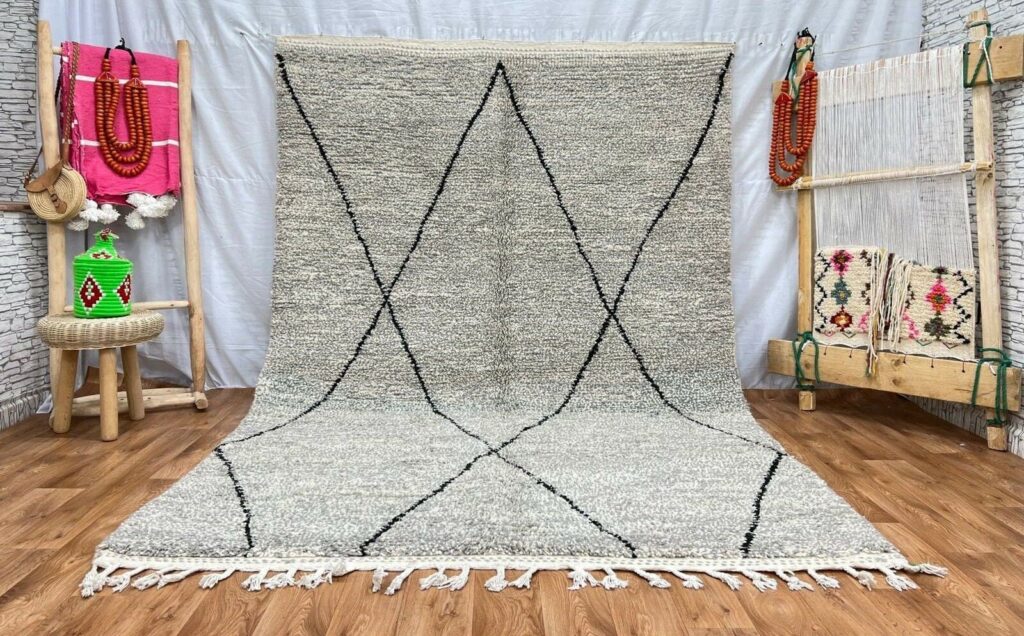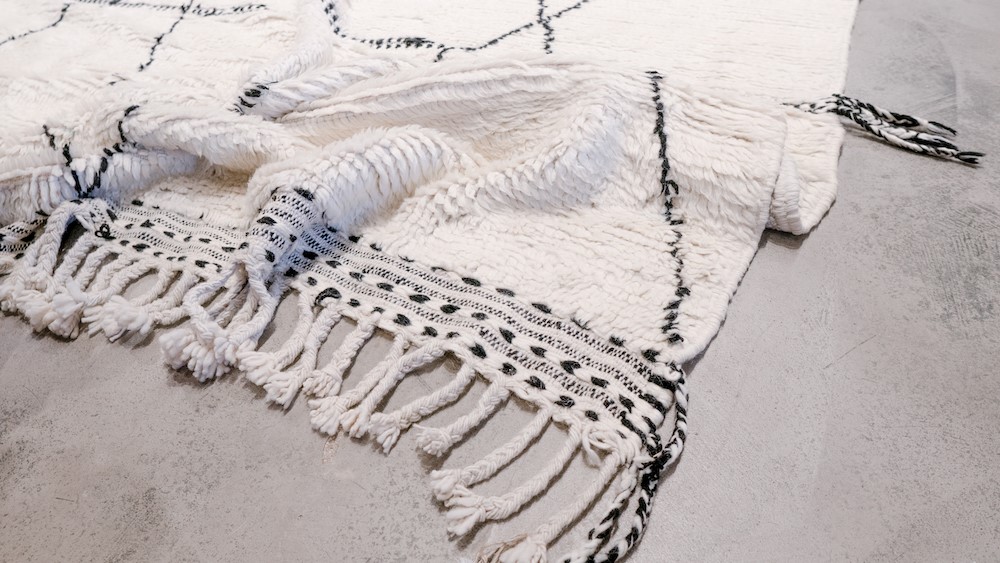The Quality of Moroccan Berber carpet
Until the early 20th century, Moroccan style rugs remained primarily undiscovered beyond the borders of Morocco. They were intricately woven for personal use, influenced minimally, if at all, by external factors. The multitude of Berber and Arab tribes across Morocco were deeply entrenched in their unique cultural and traditional heritage, and their rugs prominently mirrored these deep-rooted influences. These variations could be vast, differing from one tribe and region to another, as each family, tribe, and group of tribes employed their distinct dyes, weaving methods, loops, knots, and patterns.

Henceforth, we’ve outlined a few crucial considerations:
- Opt for Hand-Knotted Rugs: Distinguishing between hand-knotted and machine-tufted rugs is crucial. Machine-tufted rugs involve wool being tufted through a latex base, which may eventually crack within a year, leading to excessive shedding. Always inspect the rug’s underside to identify the base material. In the case of Moroccan Berber rugs, cotton is frequently used, while wool is less common. Another method to verify this is by examining the fringes, crafted from the open ends of the loom. Both wool and cotton are durable, though wool is more sustainable and aesthetically appealing.
- Source of the Wool: The wool utilized in crafting a Beni Ourain rug is invariably 100% original, enhancing its distinction and market demand. The geographical origin of the wool, albeit somewhat challenging to ascertain, holds paramount significance when it comes to Moroccan rugs. Wool from sheep residing in lower-altitude areas, particularly around major cities, possesses shorter fibers that are more prone to breakage and shedding. This type of wool is frequently used in Berber rugs sold in urban centers due to its cost-effectiveness. Conversely, wool sourced from sheep in higher-altitude regions like Morocco’s High Atlas Mountains boasts longer fibers, significantly elevating the quality of a Berber rug.

- Dyeing the Wool: To enhance the rug’s aesthetic appeal, the wool undergoes dyeing to ensure long-lasting color retention even after years of rigorous use. Premium dyes are employed in this process, ensuring the rug’s enduring vibrancy.
- Knot Density or Rug Weight: Evaluate the knot density by counting the wrapping lines utilized between two rows of knots. For instance, while we utilize a maximum of two lines, it’s not uncommon to find rugs with five or more lines. Additionally, consider the weight of the Berber carpet. A medium-sized rug typically contains an average of 12 kilograms of wool.
- Ancient Weaving Techniques: A unique characteristic of these Berber rugs is their creation through ancient weaving techniques, carried out by Berber women hailing from Morocco’s interior regions, which still retain their rich traditions and cultures. These specialized techniques contribute to the high-quality of the woolen rug and ensure its longevity.
- Technological Advancements: The technology employed in the rug’s fabrication plays a pivotal role in its production. All these factors culminate in a high-quality rug that can withstand years of continuous use. This reliability allows for frequent cleaning without concerns about diminishing its quality.
